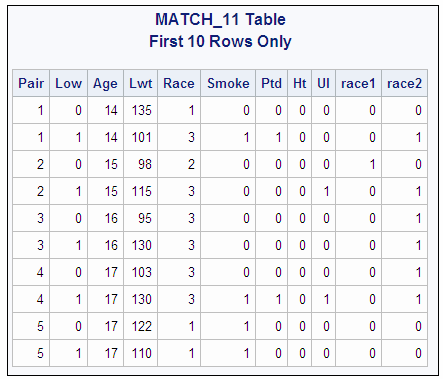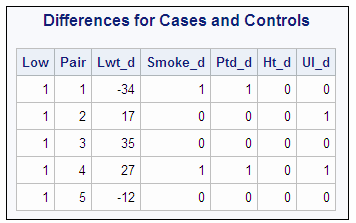SQL Procedure
- Syntax
 Procedure SyntaxPROC SQL StatementALTER TABLE StatementCONNECT StatementCREATE INDEX StatementCREATE TABLE StatementCREATE VIEW StatementDELETE StatementDESCRIBE StatementDISCONNECT StatementDROP StatementEXECUTE StatementINSERT StatementRESET StatementSELECT StatementUPDATE StatementVALIDATE Statement
Procedure SyntaxPROC SQL StatementALTER TABLE StatementCONNECT StatementCREATE INDEX StatementCREATE TABLE StatementCREATE VIEW StatementDELETE StatementDESCRIBE StatementDISCONNECT StatementDROP StatementEXECUTE StatementINSERT StatementRESET StatementSELECT StatementUPDATE StatementVALIDATE Statement - Overview
- Examples
 Creating a Table and Inserting Data into ItCreating a Table from a Query's ResultUpdating Data in a PROC SQL TableJoining Two TablesCombining Two TablesReporting from DICTIONARY TablesPerforming an Outer JoinCreating a View from a Query's Result Joining Three TablesQuerying an In-Line View Retrieving Values with the SOUNDS-LIKE Operator Joining Two Tables and Calculating a New ValueProducing All the Possible Combinations of the Values in a ColumnMatching Case Rows and Control RowsCounting Missing Values with a SAS Macro
Creating a Table and Inserting Data into ItCreating a Table from a Query's ResultUpdating Data in a PROC SQL TableJoining Two TablesCombining Two TablesReporting from DICTIONARY TablesPerforming an Outer JoinCreating a View from a Query's Result Joining Three TablesQuerying an In-Line View Retrieving Values with the SOUNDS-LIKE Operator Joining Two Tables and Calculating a New ValueProducing All the Possible Combinations of the Values in a ColumnMatching Case Rows and Control RowsCounting Missing Values with a SAS Macro
Example 14: Matching Case Rows and Control Rows
| Features: |
joined-table component |
| Table names: | MATCH_11 MATCH |
This example uses a
table that contains data for a case-control study. Each row contains
information for a case or a control. To perform statistical analysis,
you need a table with one row for each case-control pair. PROC SQL
joins the table with itself in order to match the cases with their
appropriate controls. After the rows are matched, differencing can
be performed on the appropriate columns.
The input table Appendix 3, “MATCH_11,” in Base SAS Procedures Guide contains one
row for each case and one row for each control. Pair contains a number
that associates the case with its control. Low is 0 for the controls
and 1 for the cases. The remaining columns contain information about
the cases and controls.
options ls=120 nodate pageno=1;
proc sql outobs=10;
title 'MATCH_11 Table';
title2 'First 10 Rows Only';
select * from match_11;Program
proc sql;
create table match as
select
one.Low,
one.Pair,
(one.lwt - two.lwt) as Lwt_d,
(one.smoke - two.smoke) as Smoke_d,
(one.ptd - two.ptd) as Ptd_d,
(one.ht - two.ht) as Ht_d,
(one.ui - two.ui) as UI_d
from match_11 one, match_11 two
where (one.pair=two.pair and one.low>two.low);
title 'Differences for Cases and Controls';
select *
from match(obs=5);Program Description
Create the MATCH table.The
SELECT clause specifies the columns for the table MATCH. SQL expressions
in the SELECT clause calculate the differences for the appropriate
columns and create new columns.
proc sql;
create table match as
select
one.Low,
one.Pair,
(one.lwt - two.lwt) as Lwt_d,
(one.smoke - two.smoke) as Smoke_d,
(one.ptd - two.ptd) as Ptd_d,
(one.ht - two.ht) as Ht_d,
(one.ui - two.ui) as UI_dSpecify the type of join and the join criterion.The FROM clause lists the table MATCH_11 twice. Thus,
the table is joined with itself. The WHERE clause returns only the
rows for each pair that show the difference when the values for control
are subtracted from the values for case.
Copyright © SAS Institute Inc. All rights reserved.

